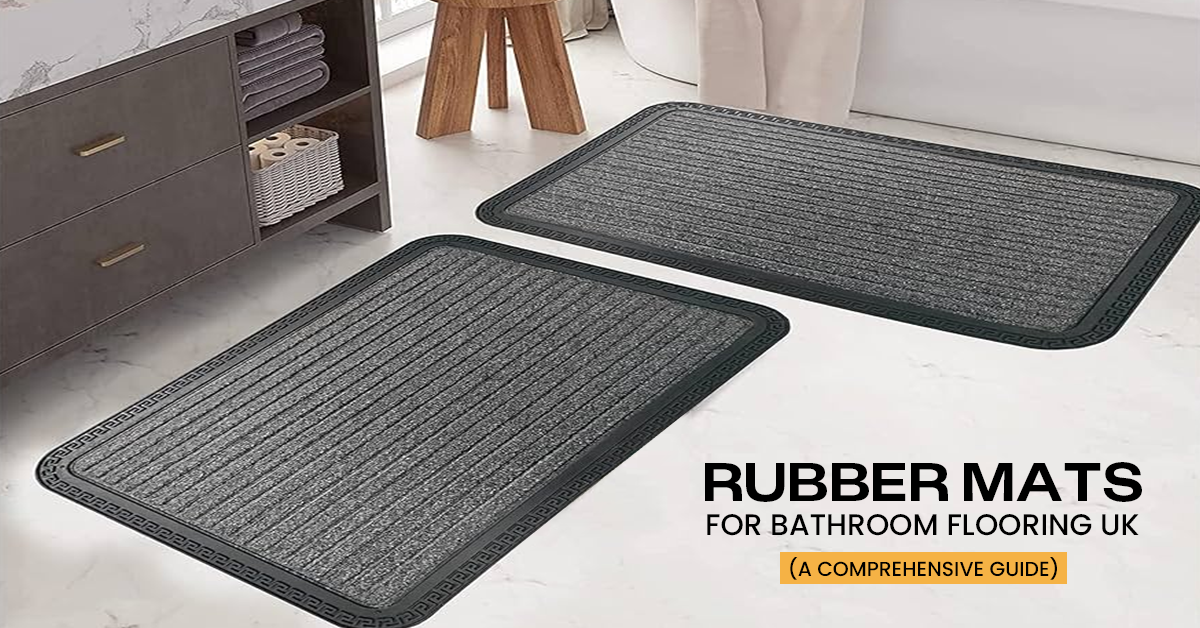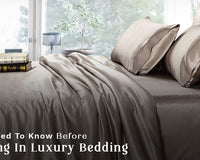In bathroom flooring, where moisture and slip hazards are ever-present, the incorporation of rubber mats has emerged as a practical solution. This guide explores the significance of rubber mats for bathroom flooring in the UK, exploring their benefits, types, installation methods, purchasing options, and frequently asked questions.
Why Does Bathroom Flooring Need Rubber Mats?
The bathroom, being a high-moisture environment, requires flooring solutions that can withstand frequent exposure to water and provide safety against slips and falls. Rubber mats are an effective barrier between the wet surfaces and the occupants, ensuring durability and safety.
Benefits of Rubber Mats for Bathroom Flooring:

Durability and Resilience
Rubber mats are renowned for their durability and can withstand heavy foot traffic and moisture exposure without deteriorating. Their resilience ensures long-term functionality, making them a cost-effective investment for bathroom flooring.
Water Resistance and Anti-Slip Properties
One of the primary advantages of rubber mats is their innate water resistance. They create a barrier that prevents water from seeping into the underlying floor, reducing the risk of water damage and mould growth. Additionally, rubber mats are designed with anti-slip properties, offering stability and traction even on wet surfaces, thus minimising the likelihood of accidents.
Easy Maintenance and Cleaning
Maintaining cleanliness in the bathroom is essential, and rubber mats simplify this task. Their smooth surface allows easy cleaning, requiring only regular wiping or washing with mild soap and water. Rubber mats offer hassle-free maintenance, unlike traditional flooring materials that may require specialised cleaning products.
Comfort and Warmth Underfoot
Rubber mats provide a comfortable surface, relieving the cold and hard floors commonly found in bathrooms mats. Their cushioned texture enhances comfort, making them particularly beneficial during extended periods of standing, such as while showering or getting ready.
Eco-Friendly and Sustainable Options
For environmentally-conscious consumers, rubber entrance mats offer a sustainable flooring solution. Many rubber mats are made from recycled materials, reducing waste and minimising the environmental impact. Additionally, their longevity and recyclability contribute to their eco-friendly credentials.
Types of Rubber Mats Available In the UK
Rubber mats for bathroom flooring are available in various types, each offering unique features and benefits to suit different needs and preferences. Here are some common types of rubber mats used in bathrooms:
Interlocking Rubber Tiles

Interlocking rubber tiles are designed to fit together like puzzle pieces, creating a seamless and customisable flooring solution. These tiles come in various sizes, thicknesses, and designs, allowing you to create patterns or layouts that complement your bathroom decor. Interlocking rubber tiles are easy to install and remove, making them ideal for DIY projects or temporary flooring solutions.
Roll-Out Rubber Flooring

Roll-out rubber flooring consists of large rolls of rubber material that can be cut to size and laid out over the bathroom floor. This rubber flooring offers a quick and easy installation process, requiring minimal cutting and fitting. Roll-out rubber flooring is available in different thicknesses and textures, providing options for both comfort and durability.
Rubber Gym Mats

Rubber gym mats are commonly used in fitness facilities and exercise areas due to their shock-absorbing properties and durability. However, they can also be suitable for bathroom flooring, especially in homes where a more rugged and resilient surface is desired. Rubber gym mats come in various thicknesses and densities, offering superior impact resistance and traction.
Drainage Rubber Mats

Drainage rubber mats are designed to allow water to flow through them, making them ideal for wet environments like bathrooms. These mats feature perforated or raised surface patterns that facilitate drainage and help to keep the floor dry and slip-resistant. Drainage rubber mats are often used in shower non slip bath mat or around bathtubs to prevent water accumulation and enhance safety.
How To Install Rubber Mats In Bathroom Flooring?
Installing rubber mats on bathroom flooring is a straightforward process that can be accomplished in a few simple steps. Here's a comprehensive guide on how to install rubber mats in your bathroom:
- Prepare the Subfloor: Before installing rubber mats, it's crucial to prepare the subfloor properly. Ensure the subfloor is clean, dry, and free from debris, dust, or grease. Use a broom or vacuum cleaner to remove any dirt or particles, and mop the surface with a mild detergent to remove any stubborn stains or residues. Allow the subfloor to dry completely before proceeding to the next step.
- Measure and Cut the Rubber Mats: Measure the dimensions of your bathroom floor using a tape measure. Transfer these measurements to the rubber mats and mark the areas to be cut accordingly. Use a sharp utility knife or scissors to cut the rubber mats to accurately fit your bathroom floor's size and shape accurately. Take care to make precise cuts to ensure a snug and seamless fit.
- Lay Out the Mats: Once the rubber mats are cut to size, lay them on the prepared subfloor to check the fit and alignment. Arrange the mats in the desired pattern or configuration, ensuring they effectively cover the entire floor area. If using multiple mats, align the edges carefully to achieve a seamless look. Make any necessary adjustments to ensure a perfect fit before proceeding to the next step.
- Secure the Mats (if necessary): Depending on the type of rubber mats you're using and the requirements of your bathroom flooring, you may need to secure the mats in place to prevent shifting or movement. Some rubber mats come with adhesive backing that can be peeled off and adhered directly to the subfloor for a secure hold. Alternatively, you can use double-sided carpet tape or a compatible adhesive to secure the mats. Follow the manufacturer's instructions when applying adhesive to ensure proper adhesion and a long-lasting bond.
- Trim Excess Material: Once the mats are securely in place, trim any excess material along the edges using a utility knife or scissors. Cut along the perimeter of the mats to remove any overhanging edges or protruding corners, ensuring a neat finish. Take your time to make precise cuts and create clean, straight edges for a professional-looking installation.
- Allow for Proper Curing: If you've used adhesive to secure the rubber mats, allow sufficient time for the adhesive to cure and set according to the manufacturer's recommendations. Avoid walking on or placing heavy objects on the mats during the curing period to prevent displacement or damage. Once the adhesive has fully cured, your rubber mats will be ready for use.
By following these steps, you can install rubber mats in your bathroom flooring effectively and efficiently, providing a durable, slip-resistant surface that enhances safety and comfort in your bathroom space. Whether you're updating your bathroom decor or seeking practical flooring solutions, rubber mats offer a versatile and reliable option for modern bathrooms.
Where can you purchase rubber mats in the UK?
Rubber mats for bathroom flooring are readily available in the UK through various online and offline retailers. Some popular sources include home improvement stores, speciality flooring shops, and online marketplaces. When purchasing rubber mats, consider factors such as quality, durability, and customer reviews to ensure satisfaction with your investment.
FAQs
Are rubber mats suitable for all types of bathroom floors?
Rubber mats can generally be installed over most types of bathroom floors, including tile, vinyl, and concrete. However, verifying compatibility with the specific flooring material is essential, and consult with manufacturers or experts if you are still determining.
Can rubber mats be cut to fit around fixtures or obstacles in the bathroom?
Yes, rubber mats can be easily trimmed or cut to accommodate fixtures, corners, or irregularities in the bathroom floor. Use a sharp utility knife or scissors for precision cutting.
Are rubber mats resistant to mould and mildew?
Rubber mats resist mould and mildew growth due to their non-porous nature and water-resistant properties. Regular cleaning and proper maintenance further deter the formation of mould and mildew.
Conclusion
Rubber mats offer a versatile and practical solution for bathroom flooring in the UK, addressing unique moisture and safety concerns. With their durability, water resistance, ease of maintenance, and eco-friendly attributes, rubber mats are a reliable choice for homeowners seeking long-lasting and functional bathroom flooring. Whether renovating your bathroom or impacting its safety and comfort, consider incorporating rubber mats into your design for a reliable and resilient flooring solution.


